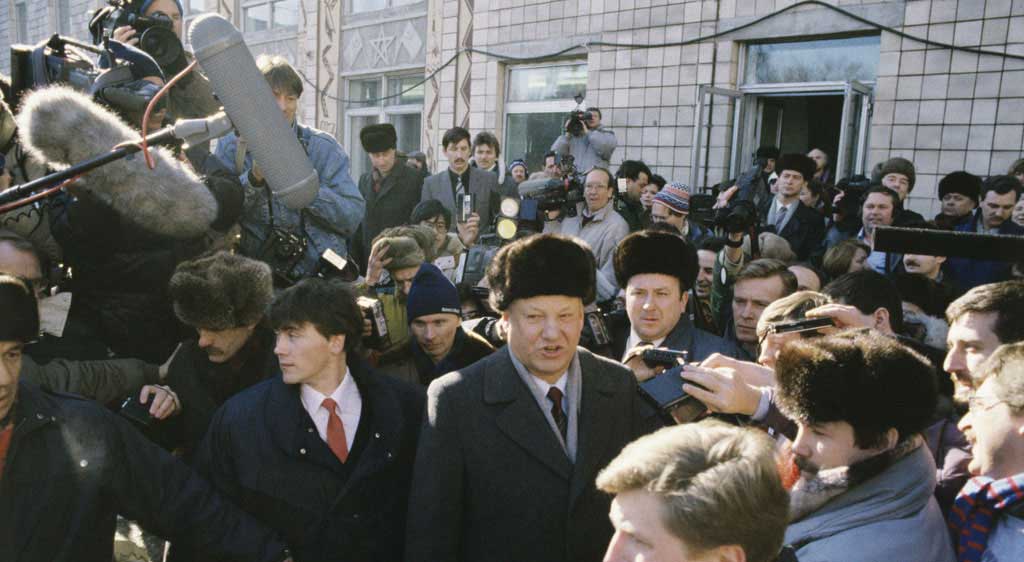1991-1999
Boris Yeltsin’s reign was probably the hardest time for Russian civilians after the war. The “shock therapy” economic reforms pushed Russia into chaos and despair.

Yeltsin Near a Polling Station During a Referendum of the Future of the Soviet Union. Photo by Vladimir Vyatkin (1991)
Background
Yeltsin enjoyed immense popularity, yet his country was bankrupt and the new economical system had to be built from scratch.
Shock Therapy
Yeltsin’s Minister Yegor Gaidar introduced the “shock therapy program”. The government-controlled planned economy was left to self-regulation. It was made too abruptly and caused a dramatic decline of living standard.
Massive privatization, conducted by Gaidar and Anatoly Chubais, gave way to corruption, criminality and the rise of oligarchs. Much of the economy was controlled by the mafia.
Constitutional Crisis
On 4 October 1993, the Russian Constitutional Crisis broke out between Yeltsin and the parliament.
War in Chechnya
From 1994-96, Chechnya tried to break away and Russia declared war. Contrary to popular expectations the conflict lasted over two years and Russia had to withdraw.
Re-election
In 1996, Yeltsin ran for a second term of presidency against Gennady Zyuganov and won.
Due to Yeltsin’s severe heart failure he was practically a formal president during his second term. The power was in the hands of his close family circle and the oligarch Boris Berezovsky.
On New Year’s Day of 1999, Yeltsin resigned in favour of his young and unknown prime minister Vladimir Putin.
Russia Under Yeltsin
1991-1999
Boris Yeltsin’s reign was probably the hardest time for Russian civilians after the war. The “shock therapy” economic reforms pushed Russia into chaos and despair.
Yeltsin Near a Polling Station During a Referendum of the Future of the Soviet Union. Photo by Vladimir Vyatkin (1991)
Background
Yeltsin enjoyed immense popularity, yet his country was bankrupt and the new economical system had to be built from scratch.
Shock Therapy
Yeltsin’s Minister Yegor Gaidar introduced the “shock therapy program”. The government-controlled planned economy was left to self-regulation. It was made too abruptly and caused a dramatic decline of living standard.
Massive privatization, conducted by Gaidar and Anatoly Chubais, gave way to corruption, criminality and the rise of oligarchs. Much of the economy was controlled by the mafia.
Constitutional Crisis
On 4 October 1993, the Russian Constitutional Crisis broke out between Yeltsin and the parliament.
War in Chechnya
From 1994-96, Chechnya tried to break away and Russia declared war. Contrary to popular expectations the conflict lasted over two years and Russia had to withdraw.
Re-election
In 1996, Yeltsin ran for a second term of presidency against Gennady Zyuganov and won.
Due to Yeltsin’s severe heart failure he was practically a formal president during his second term. The power was in the hands of his close family circle and the oligarch Boris Berezovsky.
On New Year’s Day of 1999, Yeltsin resigned in favour of his young and unknown prime minister Vladimir Putin.
Boris Yeltsin